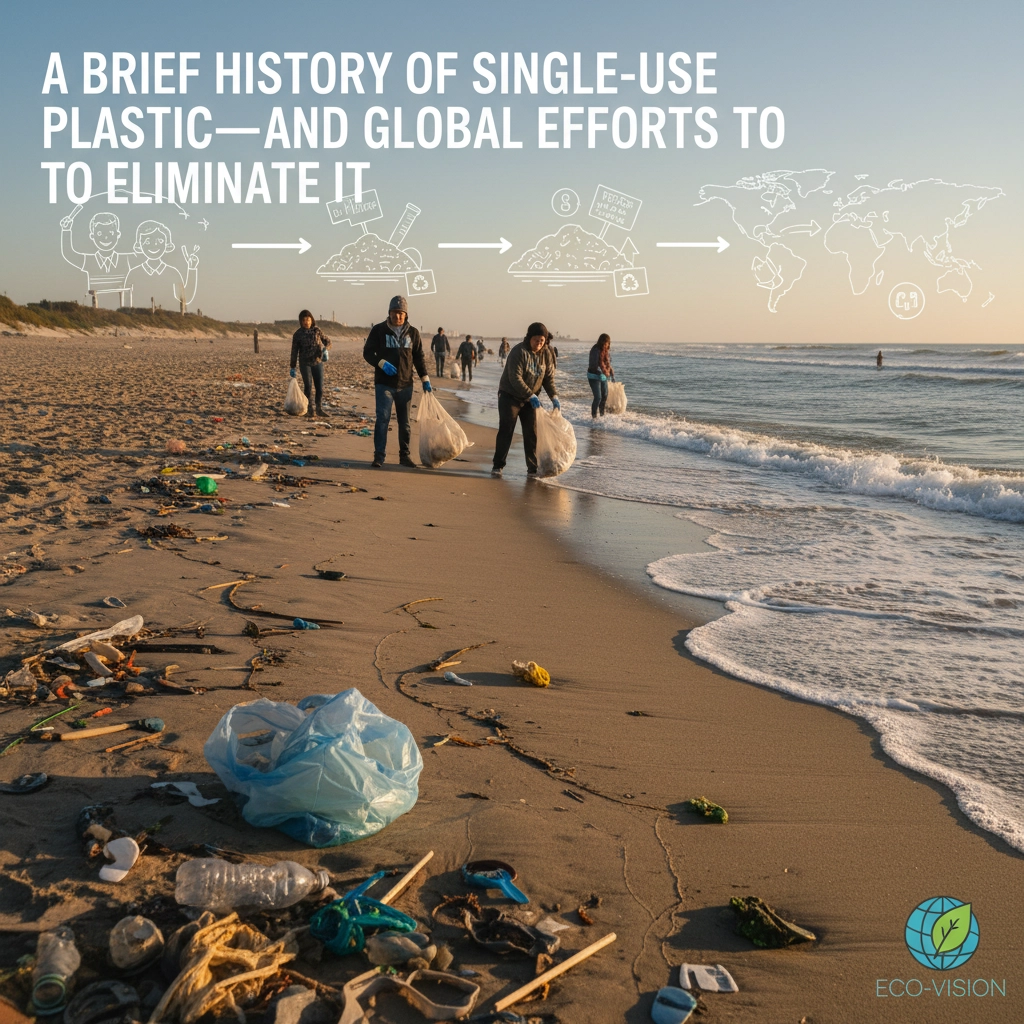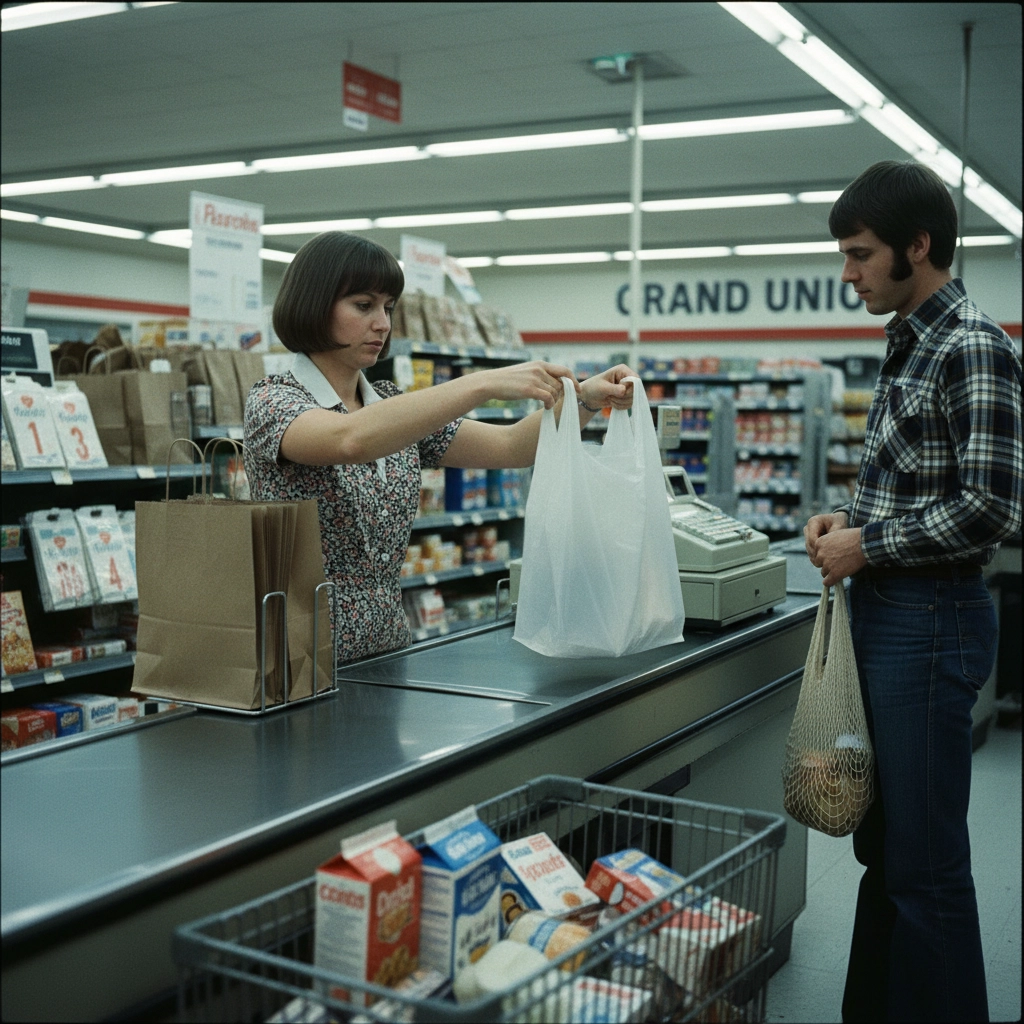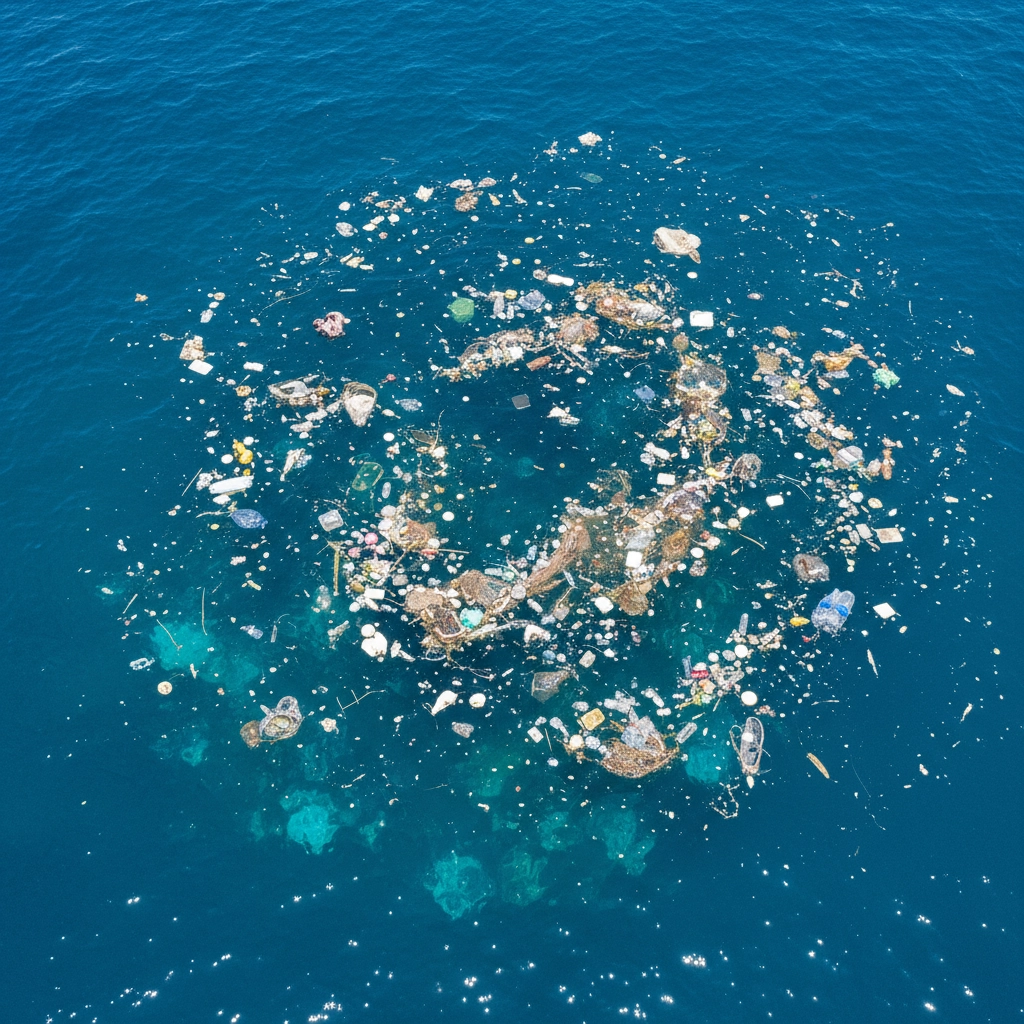
What started as a revolutionary material designed to save elephants has become one of our planet's most pressing environmental challenges. Single-use plastic, once hailed as the future of convenience and hygiene, now represents a stark reminder of how good intentions can lead to unintended consequences on a global scale.
The journey from innovation to crisis spans over 160 years, transforming from a niche industrial material to a ubiquitous part of daily life: and ultimately, a mounting environmental threat that's prompting some government to take action.
The Surprising Origins of Plastic
The plastic story begins in 1862, when British inventor Alexander Parkes showcased "Parkesine" at the International Exhibition in London. Described as "a substance hard as horn, but as flexible as leather, capable of being cast or stamped, painted, dyed or carved," this first moldable plastic was more novelty than necessity.
The real breakthrough came seven years later when American John Wesley Hyatt responded to a $10,000 challenge from a New York billiard ball company seeking an alternative to ivory. His invention of the first synthetic polymer didn't just win him the prize: it potentially saved over 20,000 elephants annually from slaughter for their tusks.

These early innovations continued with Jacques E. Brandenburger's 1908 invention of cellophane, the first see-through packaging material. Suddenly, consumers could inspect their food purchases without compromising hygiene: a revolutionary concept that would reshape retail forever.
The accidental discovery of polyethylene in 1933 at a chemical plant in Northwich, England, added another versatile material to the growing plastic family. What began as a laboratory mishap would eventually be used for everything from food packaging to medical implants.
The Dawn of Disposable Culture
The 1950s marked plastic's transformation from industrial curiosity to cultural phenomenon. This decade witnessed the birth of what we now recognise as single-use plastic culture, driven by post-war optimism and a hunger for convenience.
Plastic began appearing in restaurants, replacing ceramic plates and metal cutlery, enabling the rise of takeaway culture that fundamentally changed how people ate. The introduction of home freezers and microwave ovens made frozen packaged foods and TV dinners possible: concepts entirely dependent on plastic packaging.
Tupperware parties became a cultural trend, bringing plastic products directly into American homes through social gatherings that celebrated the material's durability and versatility. Yet paradoxically, this same period saw LIFE Magazine publish "Throwaway Living," celebrating disposability and encouraging consumers to "discard without concern": despite plastic being one of the most durable materials ever invented.

The Plastic Bag Revolution
The 1970s introduced perhaps the most recognisable symbol of single-use plastic: the shopping bag. Initially met with consumer scepticism when first introduced in 1970, plastic bags quickly gained acceptance due to their undeniable convenience and cost-effectiveness.
By 1979, these bags had almost entirely replaced paper alternatives worldwide. The shift accelerated dramatically in 1982 when major grocery chains Kroger and Safeway made the complete switch from paper to plastic, cementing the bag's place in consumer culture.
This period also saw Coca-Cola introduce the single-use PET bottle, replacing their iconic glass containers. This decision alone transformed the beverage industry and dramatically increased global plastic waste: today, nearly a million plastic beverage bottles are purchased worldwide every minute.
The Environmental Reckoning
The 1970s and 1980s brought the first major backlash against plastic waste as environmental awareness intensified. Plastic became a particular target because while most plastic products are designed for single use, the material itself lasts virtually forever in the environment.
The industry's response was swift and strategic. In 1989, executives from major corporations including Exxon, Chevron, Dow, and DuPont launched a $50 million annual advertising campaign promoting plastic's benefits while simultaneously pushing recycling as the primary solution.
This recycling focus proved inadequate: over 70 years later, less than 9% of all plastic in the United States is actually recycled. Meanwhile, community action began emerging through initiatives like Clean Up Australia Day, which launched with 300,000 participants and collected over 200,000 tonnes of rubbish between 1990 and 2006.

The discovery of the Great Pacific Garbage Patch in 1997 provided a stark visual representation of the crisis: a swirling mass of floating plastic waste often described as being the size of Texas. This discovery crystallised public understanding of how plastic pollution accumulates in marine environments.
Global Awakening and Action
By 2016, a global population of 7 billion was producing over 320 million tonnes of plastic annually, with projections suggesting this figure would double by 2034. Current estimates indicate that approximately 1-2 million tonnes of plastic waste enters our oceans each year, with around one-quarter of all plastic waste being mismanaged globally.
The 2000s saw modest improvements in recycling rates, but it became clear that recycling alone couldn't solve the problem. Several American cities began implementing bans on single-use plastic bags, with grocery-store bags becoming a primary target for activists seeking to eliminate disposable plastics.
European Leadership in Plastic Reduction
The European Union has emerged as a global leader in addressing single-use plastic pollution through comprehensive legislation and ambitious targets. The EU's approach recognises that voluntary measures alone are insufficient to tackle the scale of the problem.
In 2019, the EU adopted the Single-Use Plastics Directive, one of the world's most ambitious legislative responses to plastic pollution. This groundbreaking directive targets the 10 single-use plastic products most commonly found on European beaches and in seas, which together represent 70% of all marine litter items.
The directive includes several key measures:
- Complete bans on certain single-use plastic items including cutlery, plates, straws, and cotton bud sticks
- Reduction targets requiring member states to significantly reduce consumption of food containers and beverage cups
- Design requirements ensuring bottle caps remain attached to containers
- Collection targets mandating that 90% of single-use plastic bottles be collected for recycling by 2029
- Extended producer responsibility making manufacturers financially responsible for cleanup costs

Individual EU member states have gone even further. France implemented comprehensive plastic reduction measures, including bans on disposable plastic cups, plates, and cutlery. Germany introduced a deposit system for single-use plastic bottles, achieving impressive recycling rates. Italy banned lightweight plastic bags entirely, replacing them with biodegradable alternatives.
The UK introduced a plastic bag tax, which saw an impressive reduction in the number of single-use bags used, with Government figures suggesting a 98% reduction, or roughly 7 billion carrier bags over the first decade of the tax. Indeed, since its introduction in 2014, the 5p tax was doubled in 2021.
The Global Response Expands
Beyond Europe, international momentum has built around comprehensive solutions. In 2019, University College London launched its Plastic Waste Innovation Hub to develop new approaches to the plastic waste challenge, focusing on everything from alternative materials to improved recycling technologies.
More significantly, international efforts have coalesced around developing a global plastics treaty aimed at reducing pollution, promoting sustainable production, and protecting oceans and wildlife. This treaty represents a fundamental shift from viewing plastic as merely a waste management issue to recognising it as a complex challenge requiring intervention at every stage of the product lifecycle.
Countries worldwide are implementing their own measures. Kenya introduced one of the world's strictest plastic bag bans, with violations carrying fines up to $40,000 or four years in prison. Rwanda has been virtually plastic bag-free since 2008, demonstrating that comprehensive bans can be successfully implemented and enforced.

Innovation and Alternative Solutions
The push to eliminate single-use plastics has sparked remarkable innovation in alternative materials and circular economy approaches. Companies are developing packaging from seaweed, mushroom roots, and agricultural waste. Some are creating truly biodegradable plastics that break down safely in natural environments. Others are producing alternatives to drinking straws using reeds and even replacements to plastic cigarette butts, the most common item of plastic rubbish in the world, using organic material.
Refill and reuse models are gaining traction, with major retailers introducing zero-waste sections and refillable container systems. Digital technology is enabling new approaches, from apps that help consumers find plastic-free alternatives to blockchain systems that track packaging through circular economy loops.
The Road Ahead
Today's anti-plastic movement represents more than environmental activism: it's a fundamental reimagining of how we produce, consume, and dispose of materials. The combination of regulatory pressure, consumer demand, and technological innovation is creating unprecedented momentum for change.
The success of EU directives demonstrates that ambitious legislation can drive real change while encouraging innovation. As more countries implement similar measures and global treaties develop, we're witnessing the early stages of what could be a fundamental transformation in how humanity relates to materials and waste.
The challenge now lies in scaling these solutions globally while ensuring that alternatives don't create new environmental problems. The history of single-use plastic teaches us that today's solutions can become tomorrow's challenges: making it crucial that we approach this transition thoughtfully, with full consideration of long-term consequences, all while maintaining a global political consensus.
The story of single-use plastic: from revolutionary innovation to environmental crisis to catalyst for change: serves as a powerful reminder that our relationship with materials is never permanent. What we create, we can also transform.
